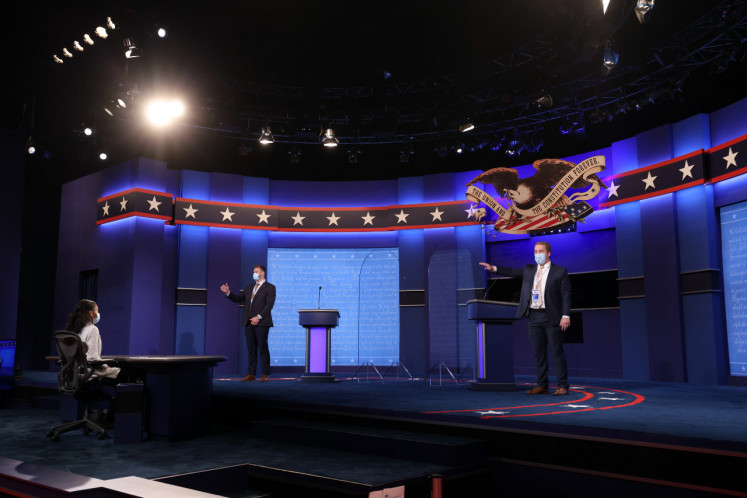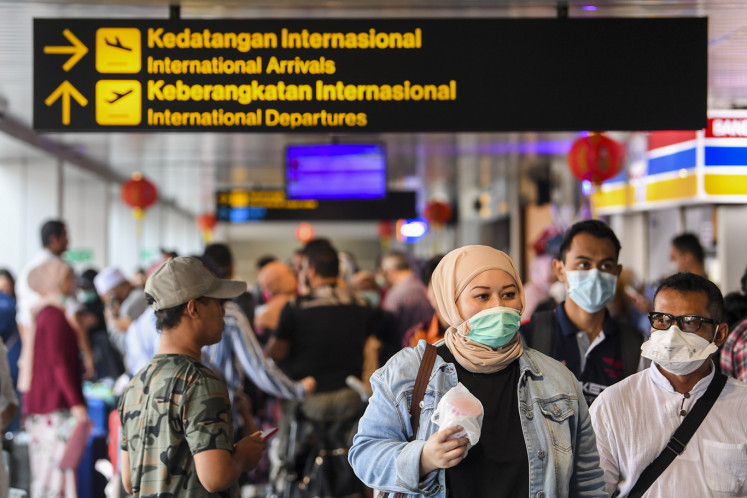Popular Reads
Top Results
Can't find what you're looking for?
View all search resultsPopular Reads
Top Results
Can't find what you're looking for?
View all search resultsSDGs in business school curricula to address ‘colossal global dysfunction’
There is about a $4.3 trillion yearly gap in SDG financing, which means the investment ecosystems are failing to enable SDG-related investments at scale and/or corporate boards are not making investment decisions at sync with SDG ambitions.
Change text size
Gift Premium Articles
to Anyone
N
o organization nor individual would be happy if five years of hard work is wiped out in an instant. Yet, this is exactly the case with the most recent global Human Development Index (HDI), published by the United Nations Development Program last month.
The world’s steady progress over the past five years seems to have been reversed as this is the first time we see a decline in the global HDI since 1990. Indonesia is not escaping this global trend, with its HDI in 2021 being lower than it was in 2018.
Indeed, the United Nations Secretary-General’s remarks at the opening of the UN General Assembly general debate in New York were blunt. António Guterres went as far as claiming that the world is “gridlocked in colossal global dysfunction” where the international community is failing to tackle the major global challenges.
Cascading crises put Sustainable Development Goals (SDGs) and the related trust in the benefits of globalization at risk. Nevertheless, a doom-and-gloom approach, albeit understandable and based on compelling evidence, has been found not particularly helpful in leveraging concerted and effective action on complex systemic issues.
The frustratingly slow progress in climate action can be partly explained by what the Norwegian climate scholar Per Espen Stoknes calls “apocalypse fatigue.” The problems are too big or they take away incentive for concrete actions. Psychologists talk about “choice paralysis,” where individuals have to deal with pervasive, but often “slow moving,” systemic crises that confront them with an abundance of choices and complex trade-offs. Putting the responsibility to make responsible choices to individual citizens and consumers has therefore leveraged relatively weak action and poor progress.
These stark reminders should drive actions to put SDGs back on track. The challenge is making them actionable preferably at the level of individual (private) organizations and how to define the present crisis also as an opportunity for concrete action by companies (in the right direction). Ban Ki-moon, who oversaw the historic adoption of SDGs in 2015, has always been vocal about the crucial role of the private sector.
A recent UN estimate indicates that there is about a US$4.3 trillion yearly gap in SDG financing, which means the investment ecosystems are failing to enable SDG-related investments at scale and/or corporate boards are not making investment decisions in sync with the SDG ambitions. Captains of industry, like former CEO Paul Polman, and business platforms, like the World Business Council for Sustainable Development, reiterate the importance of the SDG agenda as the world’s best long-term business plan. Containing an estimated $12 trillion annual investment opportunities, it (still) can be considered to “unlock to what is the growth story of our century, putting people and the planet first.”
















